
On Tuesday I harvested my shelling beans. The timing of this was dictated largely by the weather forecast. After weeks and weeks of hot dry weather, we had been promised a few days of slightly cooler temperatures and some light rain. My beans were definitely mature, and many of the pods were already dry, so I felt that rain might not do them any good - in fact the pods might split open, causing me to lose the beans. So, for better or for worse, I picked the beans.
This year I have two types. The first is "Cherokee Trail Of Tears", which have been growing up a wigwam of 7ft bamboo canes on my Courtmoor Avenue plot. With the prolonged hot dry weather, the bean plants have struggled, and I think they have matured a lot earlier than they would have done if we had had more rain. By this first week of August they had lost almost all their leaves.
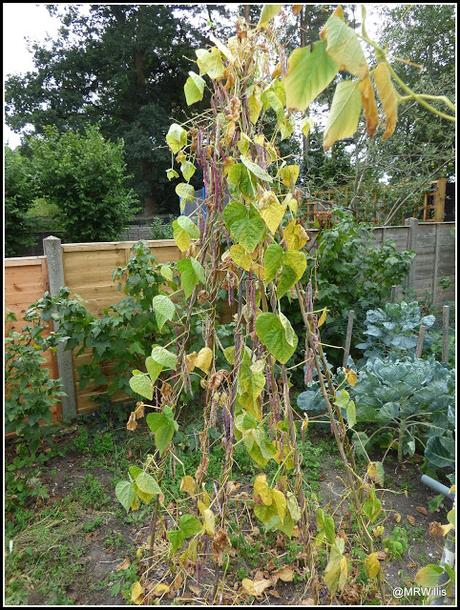
However, there was still a fair few pods, particularly up at the tops of the plants, and the lack of leaves made the pods much easier to see.
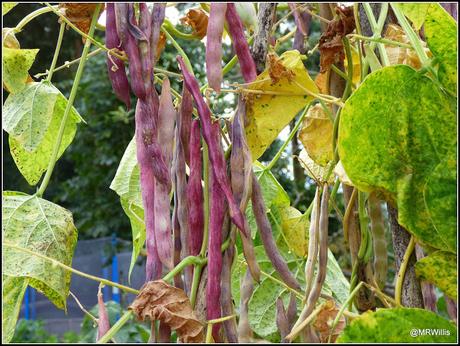
The pods begin their life being green, but as they mature they change colour, though not always to the same colour. Some go pink, some go purple, some are very speckly, some are quite plain, but in the end they all dry to a buff / brown color.
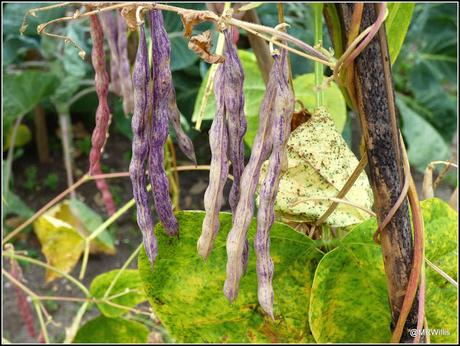
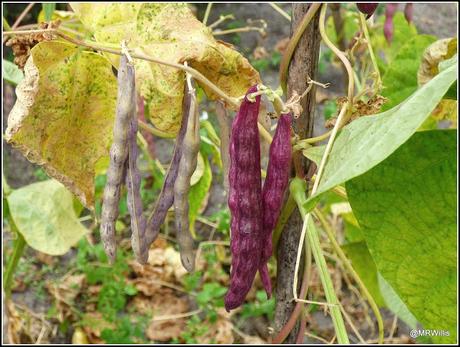
I took my big harvesting-basket with me for this task and when I had finished picking the Cherokee beans it was already half full.
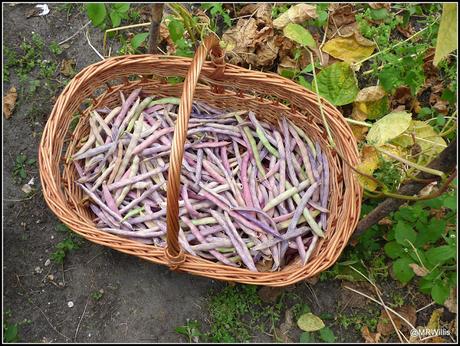
I then moved to the second type of bean, which are the "Tunny" beans. They have been growing up 8ft bamboo poles incorporated in my main bean-support contraption. In this next photo you can see them between the Cherokees' wigwam and the much-greener Runner Beans, with the red flowers.
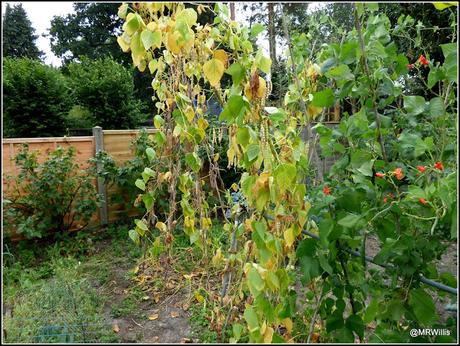
Again, I found that a large proportion of the bean-pods were high up on the plants. I don't know why this is. Perhaps the higher-up flowers were more visible / accessible to the bees and therefore the pollination rate was better??
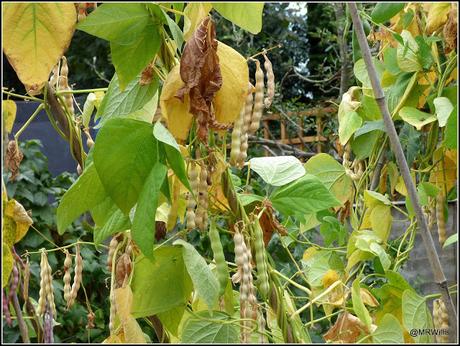
The pods of this type of bean look very knobbly, because the beans inside are very prominent.
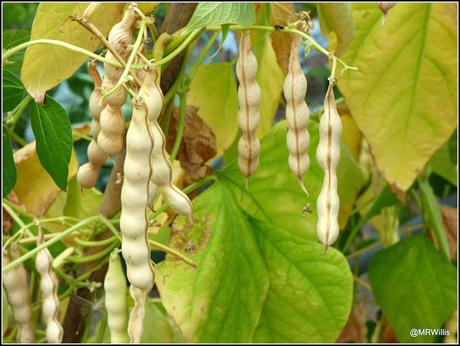
When I had picked all of this type, my basket was about two-thirds full.
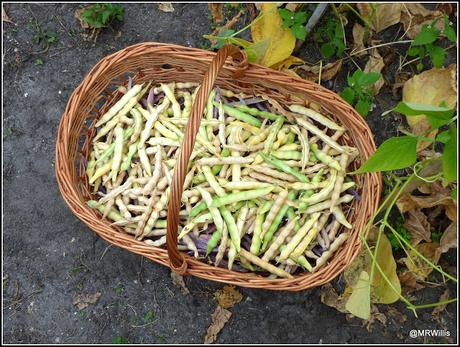
Of course, when the pods are shelled, the beans inside will occupy a much smaller space - there will probably be less than 500g all told. Still, there is something deeply satisfying about this type of bean - especially when you can lift out your little stash of them in January or February and use them to make a nice warming soup or stew!
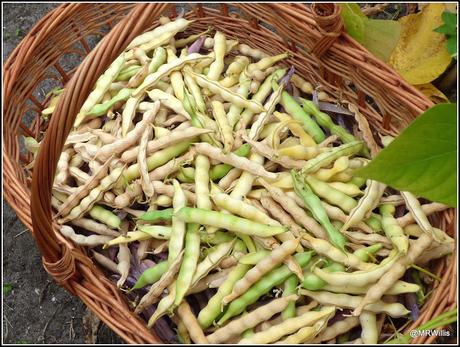
Not all these pods are completely dry, so I plan to give them a few days either outside in the sun, or (if it's rainy) indoors in the airing-cupboard, before I start shelling them. However, just for this post, here's a sneak preview of what each type looks like...
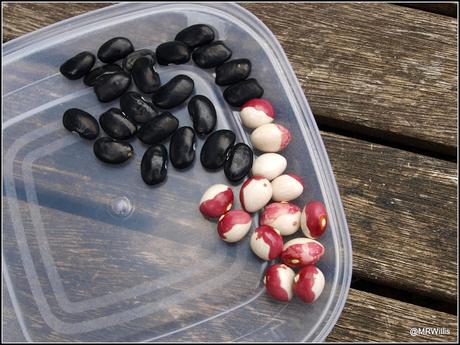
Black = Cherokee Trail Of Tears, Pink/white = Tunny
